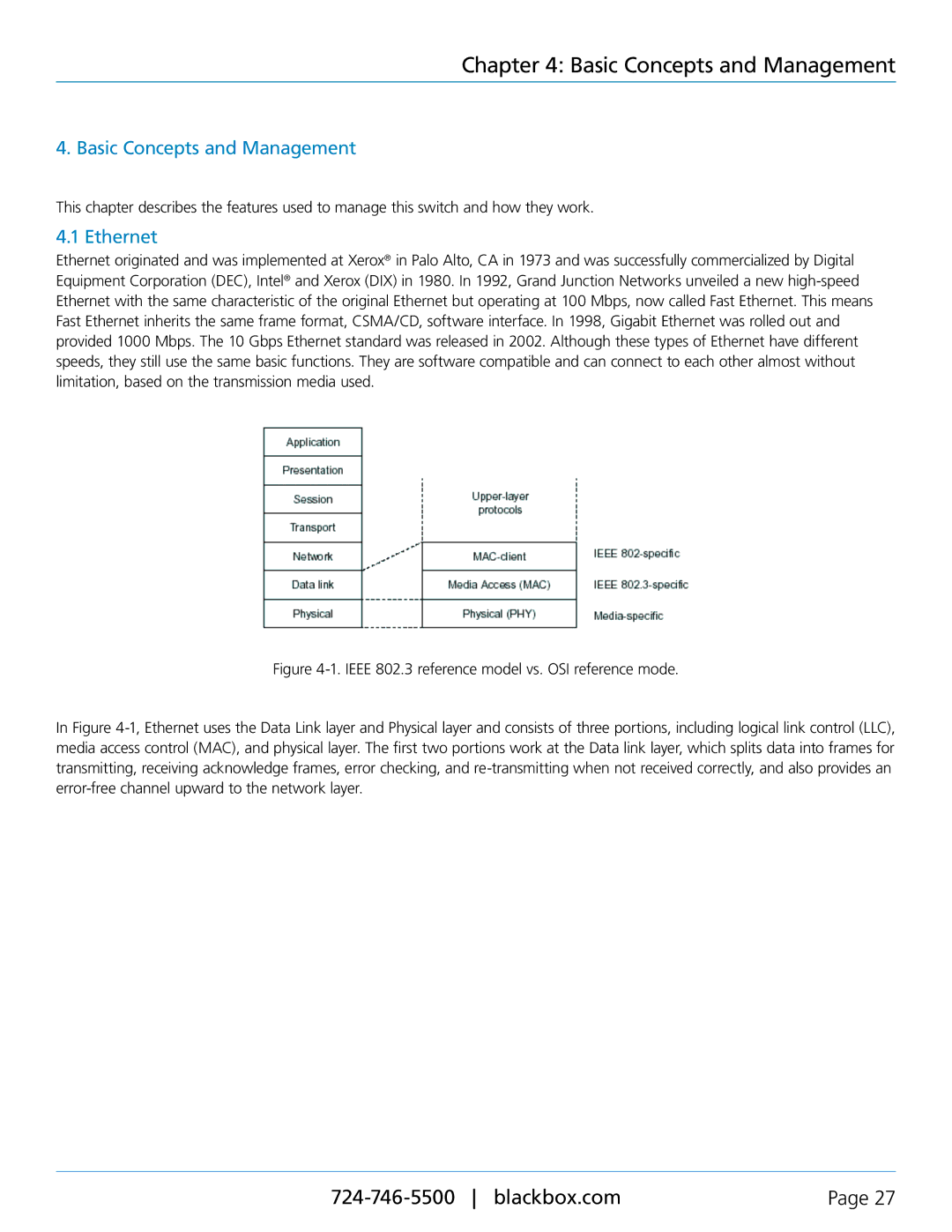
Chapter 4: Basic Concepts and Management
4. Basic Concepts and Management
This chapter describes the features used to manage this switch and how they work.
4.1 Ethernet
Ethernet originated and was implemented at Xerox® in Palo Alto, CA in 1973 and was successfully commercialized by Digital Equipment Corporation (DEC), Intel® and Xerox (DIX) in 1980. In 1992, Grand Junction Networks unveiled a new
Figure 4-1. IEEE 802.3 reference model vs. OSI reference mode.
In Figure 4-1, Ethernet uses the Data Link layer and Physical layer and consists of three portions, including logical link control (LLC), media access control (MAC), and physical layer. The first two portions work at the Data link layer, which splits data into frames for transmitting, receiving acknowledge frames, error checking, and re-transmitting when not received correctly, and also provides an error-free channel upward to the network layer.
Page 27 |
